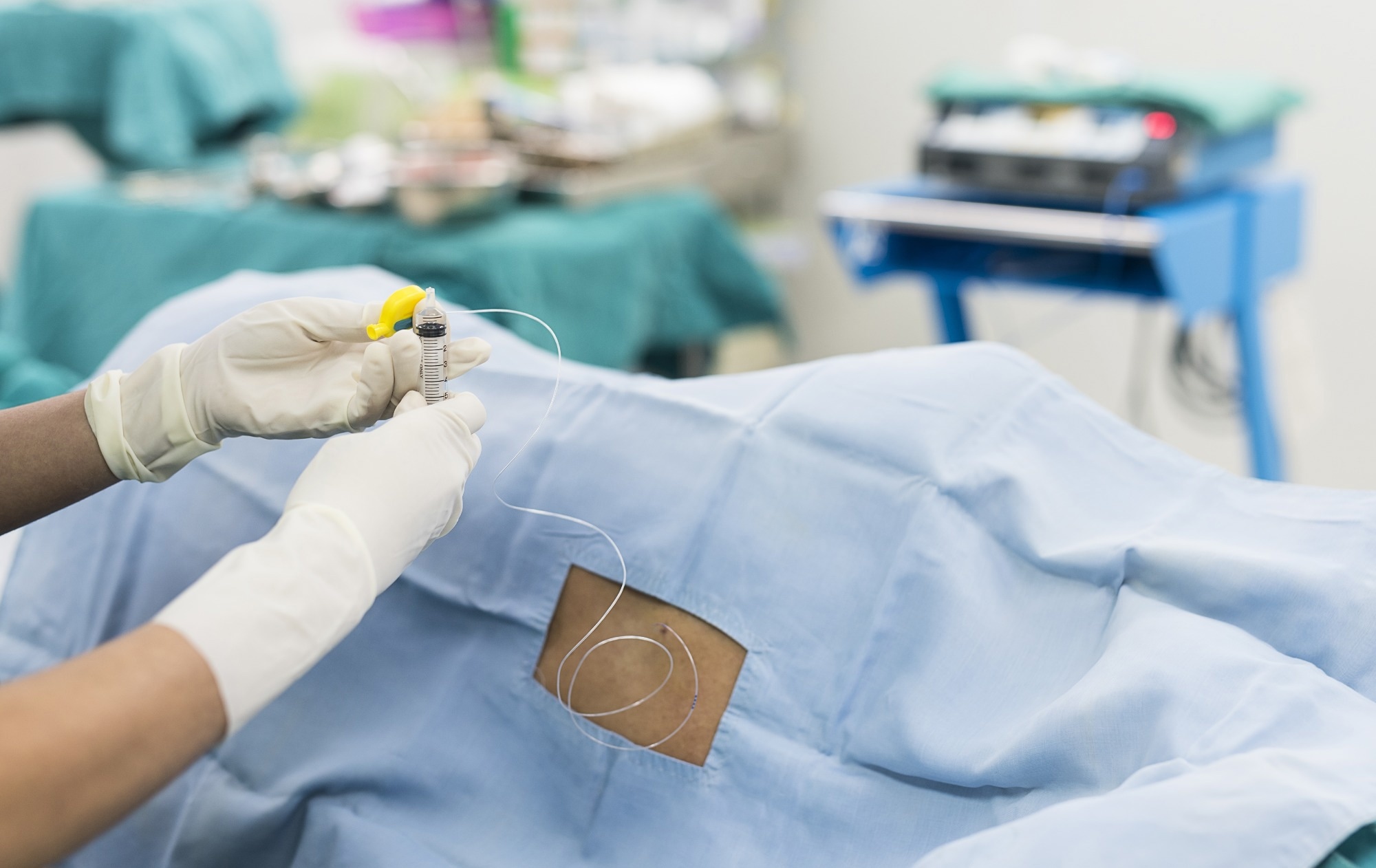In a recent study posted to the medRxiv* preprint server, researchers conducted cerebrospinal fluid (CSF) proteome profiling and identified CSF proteins involved in dementia with Lewy bodies (DLB).
 Study: CSF proteome profiling reveals highly specific biomarkers for dementia with Lewy bodies. Image Credit: ChaNaWiT/Shutterstock.com
Study: CSF proteome profiling reveals highly specific biomarkers for dementia with Lewy bodies. Image Credit: ChaNaWiT/Shutterstock.com

 *Important notice: medRxiv publishes preliminary scientific reports that are not peer-reviewed and, therefore, should not be regarded as conclusive, guide clinical practice/health-related behavior, or treated as established information.
*Important notice: medRxiv publishes preliminary scientific reports that are not peer-reviewed and, therefore, should not be regarded as conclusive, guide clinical practice/health-related behavior, or treated as established information.
Background
DLB is the second most prevalent type of dementia in older people following Alzheimer's disease (AD). DLB's characteristics include parkinsonism, rapid eye movement, sleep behavior disorder, cognitive fluctuations, and visual hallucinations.
Due to the pathological and clinical similarities between DLB and AD, differential diagnosis can be difficult, leaving many DLB patients undiagnosed.
So far, only a few DLB biomarkers have been thoroughly studied. The intraneuronal buildup of α-synuclein (α-syn) in the neocortical Lewy bodies is a pathological feature of DLB. Nevertheless, α-syn pathology is not exclusive to DLB patients; it can also be present in over 40% of AD patients.
The crucial CSF biomarkers for AD diagnosis, including total tau (tTau), phosphorylated tau (pTau), and amyloid β peptide (Aβ1-42), have also been shown to have inadequate diagnostic specificity for differentiating DLB from AD because they are abnormal in around 25% to 40% of DLB cases.
Overall, additional markers indicating unique, different, and specific elements of the DLB pathophysiology are required and may be beneficial in various contexts in both trial and clinical settings.
About the study
In the current study, the investigators aimed to determine specific CSF proteomic variations that underpin DLB and to validate and develop multiplex biomarker assays that might help in the precise DLB diagnosis.
To achieve this, the team leveraged a high-throughput proteomics method termed immune-based proximity extension assay (PEA) to evaluate a large cohort of AD patients, DLB patients, and controls.
The study sample consisted of 235 AD patients, 109 DLB patients, and 190 controls. The researchers measured the levels of 92 CSF proteins in the samples using a panel of 92 protein assays. Subsequently, they employed statistical techniques to pinpoint proteins whose expression varied between the AD, DLB, and control groups.
Additionally, the investigators established a custom CSF biomarker panel with just seven DLB markers identified from the study, possessing superior performance in differentiating DLB from AD.
They validated six of these indicators' custom multiplex assay performance across two independent cohorts and an autopsy cohort. The biomarker panel was developed using random forest models and logistic regression, and their performance was assessed using receiver operating characteristic (ROC) curve analysis.
Results
Over 50 CSF proteins that were dysregulated in DLB were found in the study, many of which were associated with myelination processes. Myelin damage may be involved in the pathogenesis of DLB, as shown by the dysregulation of myelination-associated proteins.
The enzyme L-amino acid decarboxylase (DDC), which is involved in the biosynthesis of dopamine, was discovered to be the most strongly dysregulated protein in DLB and to be very accurate in differentiating DLB from controls and AD patients. The dysregulation of DDC indicates that DLB may have altered dopamine metabolism.
Further, the team developed a custom CSF biomarker panel for seven identified indicators more effectively distinguish DLB from AD.
The custom multiplex assays for six of the discovered biomarkers, namely CRH, DDC, MMP-3, MMP-10, ABL1, and THOP1, were able to identify DLB cases in various independent cohorts with excellent accuracy, opening up novel testing options for clinical trials and diagnostic settings.
Conclusions
The study's findings offer novel insights into the molecular pathways underlying the pathogenesis of DLB and indicate compelling biomarker candidates for the precise diagnosis of DLB. The research also emphasizes the possibility of high-throughput proteomics and machine-learning methods for biomarker identification and diagnostic tool development for neurodegenerative illnesses.
The study results imply that dopamine metabolism and myelin damage may be involved in the pathogenesis of DLB. The study could inspire the development of novel therapies that focus on these pathways.
The research findings have significant clinical ramifications since the identification of specific biomarkers for DLB might help in the precise disease diagnosis, which is frequently misdiagnosed as Parkinson's disease or AD.
While the study offers promising biomarkers candidates for the specific diagnosis of DLB, more research is required to confirm these findings in more diverse and larger patient populations and to explore the potential of these biomarkers for tracking the progression of the disease, differential diagnosis, and treatment response.

 *Important notice: medRxiv publishes preliminary scientific reports that are not peer-reviewed and, therefore, should not be regarded as conclusive, guide clinical practice/health-related behavior, or treated as established information.
*Important notice: medRxiv publishes preliminary scientific reports that are not peer-reviewed and, therefore, should not be regarded as conclusive, guide clinical practice/health-related behavior, or treated as established information.